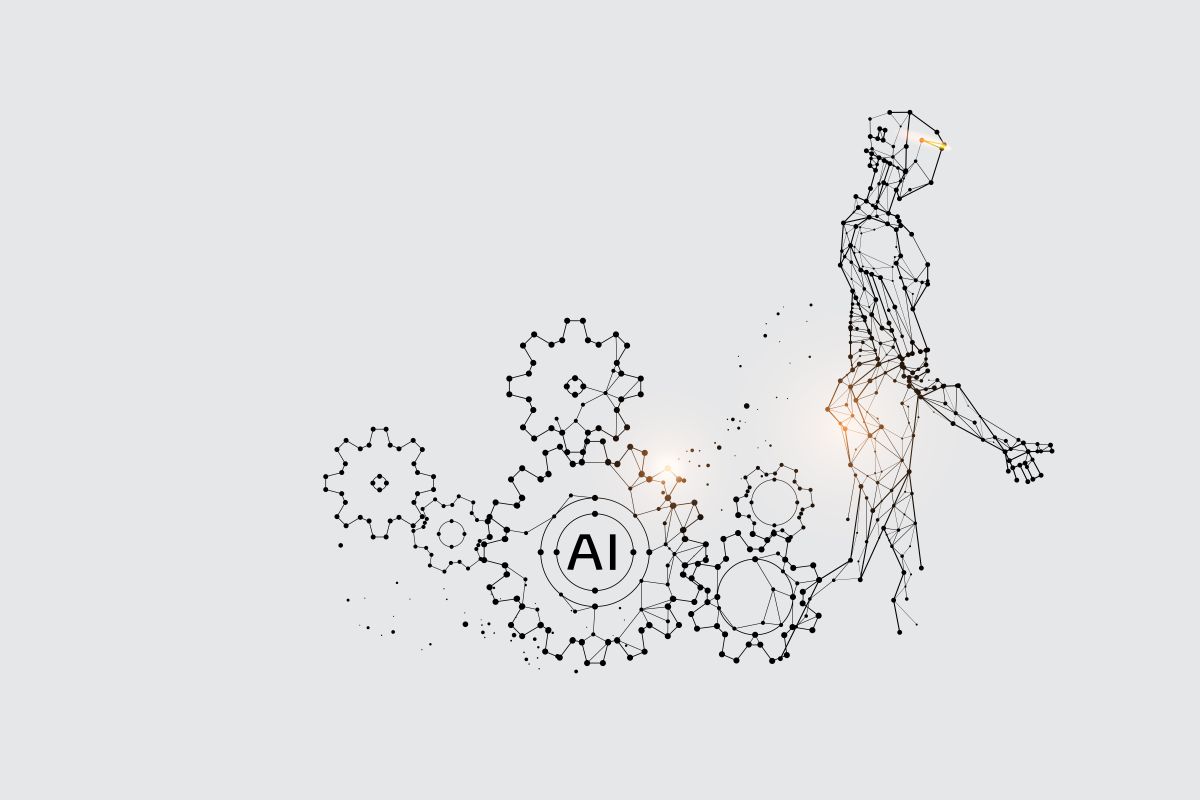- Homepage
- News and Features
- How AI Can Boost Efficiency and Simplify Tasks
How AI Can Boost Efficiency and Simplify Tasks
Dr Ben McGraw explores some of the quick wins that turfgrass professionals can gain from using AI tools.
![AdobeStock_563208173 [Converted] copy.jpg](https://www.bigga.org.uk/static/398db74a-d4e4-4642-9040524097a157f5/1200x799_highestperformance__4a7c7e45a350/AdobeStock563208173-Converted-copy.jpg)
I’m an entomologist by training; I study insects and earthworms. You might imagine that such things are about as far removed from the AI revolution as it is possible to be, but you’d be wrong.
At Penn State we do a lot of studies in the insect world and much of our teaching intersects science or education with technology. The rise of AI over the past four or five years has changed the landscape quite dramatically and made me realise this is an area where I need to sharpen my understanding.
While I am certainly not an expert in the field, I have developed an interest in exploring its utility. What I have found is an abundance of tools that have made my job easier, and they are freely available to you as well. Yet a recent survey in Golf Course Industry magazine showed that adoption of AI in the turfgrass industry is remarkably low.
Large language models
My own journey with AI has mostly been from the educational side of things, with a focus on large language models. These are systems trained on vast amounts of text data to understand, generate and respond to human language. The one most people will be familiar with is ChatGPT. Even if you haven’t engaged with that software, or others like it, chances are you will have had some experience with predictive texting on your phones, suggested search terms on Google, or recommendations on Netflix – these are examples of AI systems that are now part of daily life for most of us.
Given the exceptional calibre of the students at Penn State, I have to concede that I am always likely to be outpaced on the learning curve when it comes to developments in technology. We have a massive online programme encompassing 300-400 students enrolled across the globe. That always leaves the question of who is doing the work. You don’t know if their mother is doing it for them, or we’d often hear people say when we travelled to golf courses, ‘We helped that kid get a degree – we all took it as a collective effort’.
But the big change coming out of Covid was the widespread adoption of AI by our students, meaning now it wasn’t their mums or colleagues doing the work for them, but software programmes – and it was noticeable in the work that was submitted. Students realised they could harness the power of AI to complete an assignment in a matter of seconds, but these shortcuts were undermining the whole point of education – which is that the value comes from the work, from learning and developing an understanding. Not just in turning in a paper that may or may not fool your teacher.

A rapid evolution
It is often said that AI is in its infancy, but Alan Turing might disagree with that. Turing began to sow the seeds of AI back in the 1950s with the Dartmouth project and his first conference on machine learning as they were developing a computer programme that could predict how a human would think.
What we’re seeing now is the rapid evolution of a technology that has been around in some form for many decades. In fact, far from being in its infancy, AI is more like a teenager, with many of the pitfalls that come with that.
Just as teens are no strangers to lying – whether intentionally or through having an incomplete grasp of the facts – so too can these AI programmes provide misleading responses. My fear as an educator, and especially a scientist, is these models will generate information that is patently wrong, and you wouldn’t know that unless you’ve taken the effort to study that system before.
Therefore, the other aspect of AI systems that is analogous to teenagers is that you have got to interact with them. You have to provide prompts, dig deeper, offer your own insights. These AI tools are dealing with reams of complex data, but they are also learning to interpret and explain it – they are not omniscient.
Low adoption rates
One of the biggest fears around AI, aside from it taking over the world and making us all superfluous, is whether it will replace us in our jobs. It’s something I hear a lot from greenkeepers as I travel around.
Now, I was shocked to see that only about five per cent of US businesses are using AI, and it’s even lower in agriculture, at two per cent. While it seems to be pervasive at the university level, both from the students and the academic side, the uptake from business is minimal. Yet 82 per cent of respondents in the Golf Course Industry survey said they believed AI will replace some part of the job by 2035 – and I would say that’s even a low percentage from my estimation.
While AI-powered technology in the world of turf is definitely in its infancy, change is coming and improvements over the next 10-15 years will be vast. However, I still think that, rather than the wholesale replacement of greenkeepers, what we’ll see is an increasing number of the more mundane, time-consuming and labour-intensive tasks being undertaken by AI-powered robots.
Whether it’s autonomous mowing solutions on steep terrain or drones spraying fine fescue areas that can’t have traffic on them, there are tasks where machines would be able to carry out the work more efficiently, to the same or higher standard, and without the downsides of a human doing it, such as risk of injury to themselves or damaging the playing surfaces.
![AdobeStock_266056885 [Converted].jpg](https://www.bigga.org.uk/static/e26caead-f749-44bd-ba77a1093cf00124/1043x652_highestperformance__4a7c7e45a350/AdobeStock266056885-Converted.jpg)
Where to start with AI
Given the low adoption rates in the turfgrass industry and the current levels of available technology, we’re not at the stage of talking about integrating robots into the workforce and dealing with AI at a high level.
The key here is baby steps – looking at the quick wins and the tools that can be used to make your jobs that little bit easier. For many people, the issue is not knowing where or how to start, so they’ve just shut themselves off from it and continued to do things the way they always have.
Here are three areas where you could start using AI right now, without the need for any great technological mastery:
1) Writing and communications
These large language models can really reduce the amount of time on the job that you spend writing. Think of those times you have a presentation to write and you get what I call ‘blank page syndrome’ – you don’t know where to start. These AI models can produce ideas, outlines or entire presentations in a matter of seconds, based on your prompts. Again, it’s important that you are still checking the details and the facts, probably tweaking a few things – don’t expect it to be 100 per cent what you wanted, but it will likely do a big chunk of the work for you.
I use this type of AI for emails. I have a lot of email correspondence and, I’ll admit, I’m a grumpy person. My communications in certain situations might not be very polite on first go, and my natural inclination is to write an email and then run it by my wife and have her tone it down for me, but AI can do that. It’s also great if you’re a non-native speaker, as it levels the playing field for you, providing the correct grammar, translations and an appropriate tone.
There are a variety of other uses to consider, and in each case the time-saving factor is probably going to be huge. Consider the following, and how long it would normally take do these things, compared to having the help of a tool like ChatGPT:
- Expense reports
- Employee handbooks
- Standard operating procedures
- Job listings
- Preparing interview questions
2) Logistics and planning
This is an area that usually requires a huge amount of data and it’s a time-consuming task to calculate how, when and where to allocate resources. As greenkeepers you have agronomic schedules with a vast scope of tasks, timelines and deadlines, and each task within that schedule needs a person assigned to it.
How we coordinate lots of moving parts around the job can be enhanced through open AI models, and that’s not something that’s doing your homework for you; it’s just making you a more efficient manager. We have a tool that I use to organise tasks in my laboratory, where we staff people seasonally. We have certain weeks where we have high demand for labour, multiple trials going on across the region that we have to get to, and what the tool allows me to do is detail the strengths and the weaknesses of each of the staff and list their availability. With that data, the tool can come up with the most efficient way to get the trials done, including information on the quickest route across the state to the various places we need to get to.
You can apply this kind of method to your own schedule on a daily or weekly basis. If you needed to add in meetings, an hour’s break for a bit of exercise, a two-hour window to work on a particular project – AI can map that all out for you. It can also come in handy when you’re having to do some maths and perhaps calculate how much sand you need for a green when you’re hollow tining. You can provide the dimensions and full details of the task at hand and it will work it out for you.
3) Data assembly, interpretation and analysis
Paid-for versions of AI tools will allow for more effective results in all of these areas but particularly when it comes to data analysis, as you can upload files, such as spreadsheets, and give it a comprehensive data set to work from. You might have figures that you need to put in a newsletter or communicate to the powers that be, and you want to showcase the data in a particular way. An AI tool can produce a graph, a chart, a table – whatever way you want to visualise that data, it’s available to you.
It can also be used to interpret data sets and provide you with a better understanding, whether it’s analysing the efficacy of a certain product or agronomic method.
A particularly impressive tool is Google NotebookLM. This is a nice bridge between the scientist and the practitioner, especially in turfgrass management, where we can take complex ideas published in peer-reviewed journals and then have it translated into a common language that all of us can understand. You can upload a file containing the journal and this platform will allow you to break it down and analyse it in all sorts of ways. Maybe you just want to draw out the main conclusions, or look at areas for further study, or compare the results of one study with another – it’s all there to engage with in a really easy-to-use way.
Figure it out
By starting with these simple models and just dipping your toe in the water, you can begin to figure out where and how AI is going to work for you.
The technology will continue to evolve and it will establish a greater foothold in the turf industry. It’s a good idea to get on board with it now and recognise that AI is something that can help you – not something that’s out to replace you. GI
What is AI?
Author

Ben McGraw
Dr Ben McGraw is an associate professor of turfgrass science and programme coordinator of online and residential turfgrass academic programmes at Penn State University. Ben specialises in insect and earthworm pest management. He obtained a Bachelor of Science from the University of Maine, his Master of Science degree in Entomology from the University of Massachusetts, Amherst, and a doctorate in Entomology from Rutgers University. Dr McGraw’s appointment at Penn State includes teaching, research and extension. His research programme focuses on understanding pest ecology and behaviour to develop sustainable management practices.

Dr Ben McGraw is an associate professor of turfgrass science and programme coordinator of online and residential turfgrass academic programmes at Penn State University. Ben specialises in insect and earthworm pest management. He obtained a Bachelor of Science from the University of Maine, his Master of Science degree in Entomology from the University of Massachusetts, Amherst, and a doctorate in Entomology from Rutgers University. Dr McGraw’s appointment at Penn State includes teaching, research and extension. His research programme focuses on understanding pest ecology and behaviour to develop sustainable management practices.
